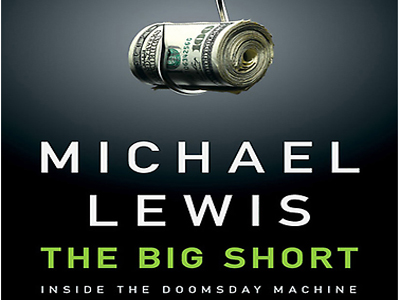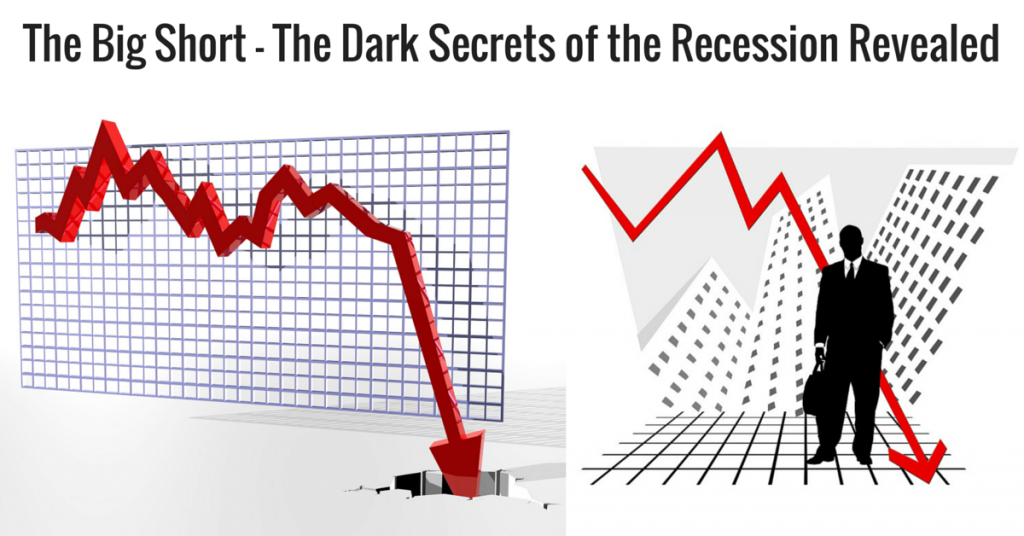 This is by Abhyuday Agarwal, and was originally published in 2010 in A First Taste of Law.
This is by Abhyuday Agarwal, and was originally published in 2010 in A First Taste of Law.
This should be the best book on the subject so far. Well, Michael Lewis seems to have gotten into the habit of churning out thrillers consecutively, with the only difference being that his books do not feature detectives, but equally intelligent financial artists. And, he lauds not those who caused the calamity – the financial crisis that spread like wildfire and made the world reel under its disastrous impact, but those who were never acknowledged for correctly predicting the disaster that was about to come.
This post outlines some of the hacks of financial and legal wizardry which led to the recession. It also traces out in detail the activities of people in three institutions in detail – Steve Eisman of FrontPoint Partners (acquired by Morgan Stanley), three partners at Cornwall Capital and Michael Burry of Scion Capital, all of which were scattered across the US, who made the most smartly calculated ‘bets’ to mint money from the happening of the recession itself.
To begin with the discussion, we first refer to a brief description of the process of securitisation as explained in the post on Liar’s Poker and Wall Street Meat.
In the new millennium, securitization was done with an absolutely new flavour to it. The loans securitised now were those made to borrowers who did not have sufficient creditworthiness, and hence, could be likely or expected to default. These were known as sub-prime loans, for which there was no need of an adequate proof of income, proper documentation procedures or other processes to verify the credit-worthiness of the borrower. Interestingly, such loans were structured so as to require little or no interest payments initially, which meant that those who took the loans would not default immediately, but at the time when they were required to pay the actual interest that was applicable to them. This also meant that the effect of making the wrong kind of loans would not be felt immediately, but after the lapse of a certain span of time.
If it was known in advance that the practice was destined to be doomed, nobody would have carried it out. Surely, there was something more to it, something that masked its riskiness. Hence, I use guidance from Lewis and make an attempt to address some concerns which a lay person man may have, to show how it was possible for the free market system to deceive all the participants involved in it.
If defaults were so common or likely or predictable, how did the process survive?
For the answer to the above question, we must understand an axiomatic statement – housing prices had always been on the rise in the US. A uniform nationwide fall in housing prices was believed to be impossible. As the loans were given out on condition that the house so bought by the borrower using the loan amount would be mortgaged, the lenders could always take possession of the house or sell it in the event that a borrower defaulted. So, if a borrower defaulted, the lender would not suffer.
For the borrower, till housing prices were on the rise, he could use his existing house, whose value would have increased by the time the first repayment fell due, and get a loan of a higher amount based on the mortgage of the house, as the value of the house would have increased. He would thus be able to pay off (or refinance, as it is known in financial jargon) the loan on the previous house, and still be left with some extra money for himself, maybe to buy a better house. This cycle went on and on, and could continue ceaselessly, so long as housing prices rose.
Artificial Bubbles
Housing prices started escalating and hit the roof, although, in reality, nobody was capable of paying for them. They had constantly risen because of an increase in demand, which was in reality artificial, and should not have existed, as a lot of the people were not in a position to pay for the houses that they were buying. So, in an ideal scenario, the actual demand for housing would have been much less.
Demise of the myth of rising housing prices
The artificial bubble in housing prices eventually burst, as there was a nationwide fall (or a ‘correction’, as it is called in financial jargon) in housing prices, implying that those who had taken housing loans on mortgages could no longer use the same property for refinancing them, that is, taking another loan (of a higher amount in this case) to pay off the prior loan, as the price of the houses they had taken loans on were now falling. They would now have to ultimately earn the money necessary to repay the loans. In fact, this encouraged a sort of moral hazard, as people were no longer interested in paying more money for a house whose value was now much less pursuant to the fall in prices.
What is worse, the lending institution was no longer secure, because the house was worth much less than the value of the loan now, so even if it took possession and sold the house, it would still be running at a loss.
Extra Topping 1: Securitisation
This, however, is a very simple picture and does not factor in any of the evils of securitisation. When housing prices fell, borrowers were evicted from their houses, and lenders ran into losses. In case of simple loans, the impact of these losses would have been confined to the lenders and the borrowers (primarily banking and mortgage companies). It should have resembled a banking crisis. Those who were neither lenders nor borrowers should have been left unaffected.
Now, we factor in the effect of securitization. Securitisation implied that the loan which was given by a lender to a borrower was split up into a number of smaller components, and each component sold off to a different entity (or ‘investor’). These entities were financial institutions – banks, investment banks, hedge funds, lending institutions, insurance companies, pension funds, just about anyone. So, with housing prices falling, not only the lending institution, but all the other participants who are actively involved in the market were ‘unguarded’ victims of default on even a single loan. These institutions are an integral part of any financial system, and an effect on them can seriously slow down economic activity.
Extra Topping 2: Credit rating errors
We have missed out another point – why would someone agree to take a portion of these horrible loans? Well, this one is simple – it was due to the rating agencies, which gave all of these loans much higher ratings than what they deserved. Why was this the case? From a description of how they functioned, it seems that rating agencies were very bureaucratic, much like the government sector. They would get money based on the number of loans (which were combined, divided and renamed into ‘securities’) which they rated, and not on the accuracy of the ratings. Consequently, there was no incentive for them to rate correctly.
Over and above that, investment banks, featuring Ivy League grads who were income-conscious, and who managed to find loopholes in and manipulate the rating models of the agencies. The model was simple – ratings agencies used a number known as a FICO score (named so because it was created by a company called Fair Isaac Corporation) to rate securitised loans. As per the author, the number was fairly, though not perfectly accurate (as it did not take into account the income of the borrower). It would indicate the likelihood of default, but only if it was applied to individual loans. With securitised loans, the model would work differently.
Ratings on Securitised Loans
A securitised loan implied that a buyer would get a mix of several loans, each of which would have a different likelihood of repayment. Ratings agencies did not split up and individually look at the combined loans at all, but simply looked at the average score of all the loans in the pool.
Let us take an example. Lewis states that the minimum FICO score required for the highest rating would be 623. Now, if a securitised loan had each component loan having a score of 623, there would be a very small or no likelihood of default. On the other hand, if a securitised loan had three loans, with two having a score of 580 and one a score of 719, the likelihood of default would be much higher. While both pools had an average of 623, defaults on the second pool would be much more likely, but it would still get the highest credit rating, the same as that of the first pool. This is how the rating agencies’ model was manipulated.
Now, there is another twist. The pooling was done in an interesting manner. You wouldn’t need to take a mix of all loans, but could take a set of the highest graded loans (triple A), loans with a somewhat lesser grading, and loans with the least grading (triple B). This was a pyramidal structure, with each layer being called a tranche. Triple A was senior, and triple B was junior. It meant that triple A holders were taking less risk (in an ideal scenario) than triple B holders. When the money would be repaid by borrowers, the owners of triple A securities would be paid off first, and after them the owners of triple B securities would be repaid. If there was insufficient money left for them to be repaid, they would have to bear the brunt of losses. As they were taking greater risk, owners of triple B rated securities would get a higher interest rate (assuming, of course, that borrowers repaid the money).
Interestingly, the triple B layer of the loan was further subdivided into three sub-layers. This triple B layer was known as a CDO (collateralised debt obligation). It had three components, the senior tranche, the mezzanine tranche, and the equity tranche. Ideally, as the parent layer was itself triple B, all of its component layers should have been assigned a triple B rating. However, they were, most strangely, be assigned triple A ratings. Ironically, as much as eighty percent of the loans in this triple B layer (CDO) were accorded triple A ratings!
Was it that bad?
In a normal situation, three to four percent of the loans can go bad despite all precaution, and therefore in a sub-prime scenario, it was not unlikely for 7 percent of them to have gone bad. What is significant is that a 7 percent loss in a pool of home loans could wipe out an entire tranche of triple B loans.
Extrapolation of greed
The profitability and ease of securitisation was very alluring. Securitisation happened so fast that very soon, there were no more loans left to securitise and package into CDOs. At this point, investment banks created what was called a synthetic CDO, that is, an instrument which did not require a person to actually buy a portion of a real loan. They started betting on existing loans in the market, not necessarily ones they had made, that if there were defaults on the particular loan (on which they did not stand to lose as it was not them that made the loans but some other lender), they would still be repaid an amount equal to the value of the loans.
Enter the Credit Default Swap
There were some people and institutions in the market who found out that this system would eventually fail. They entered into credit default swap (CDS) transactions. A credit default swap is essentially an insurance against a default. A person who owns a loan, and who fears a risk of default on that loan by the borrower, can pay a premium to buy a CDS from the seller, and the seller agrees to compensate the owner for any losses that he may suffer if the borrower does not repay.
How can insurance turn profitable?
Well, that’s correct – insurance only results in one getting indemnified, that is, covering up one’s losses, but never results in a profit. In the sub-prime market, people were purchasing ‘naked’ CDSes, that is, they did not need to own the loan on which they purchased insurance. If the loan was actually repaid, then they would not be paid the insured amount. In such a scenario, they would only lose the amount that they paid as premium, like any other normal purchaser of insurance. However, if there was a default on the loan, they would be compensated to the full value of the loan, the only difference being, that as they had not provided the loan, the entire amount they received was their profit.
A naked CDS was used to implement a synthetic CDO, as one no longer needed to make a new sub-prime loan to create a CDO out of it anymore. All one needed was another person in the market who held the opposite view about an existing loan getting repaid.
What happens to insurance companies / CDS sellers?
An insurance company earns revenue by collecting premium, and investing a portion of such premium for higher returns. As per an ideal model of pricing the risk (which is done by qualified people known as ‘actuaries’ who use elaborate mathematics for the same), everybody is not expected to actually default simultaenously, if the model of the insurance company is correct. Hence, if the insurance company adequately values the risk of loss, and prices the insurance accordingly, the insurance company can make some profit from its business.
Well, here comes the catch – insurance is priced based on the likelihood of a risky event actually taking place. The greater the likelihood of the event occurring, the more expensive the insurance is. If the event is less likely to happen, the insurance will be cheap. In the case of the financial crisis, a lot of loans which were likely to go bad were still accorded triple A ratings. Therefore, insurance on them was cheap. Hence, if they went bad, the insurance companies could actually run into tremendous losses.
Superprofits for choosing the most rotten apples in the basket
A naked CDS on triple A rated CDOs would not only yield windfall profits in the event of a default for the purchaser of the CDS. Further, the CDS would also be very cheap to purchase for a buyer, as insurance on triple A rated loan was priced very low, based on the incorrect presumption of a lower likelihood of default. Next, if somebody took the time out to select the worst of the triple A rated loans and purchased CDS on them, which would be priced at the same rate as CDS on a set of good triple A loans, the likelihood of a default, and of windfall profits for the CDS purchaser, would be that much higher. This is what the hedge funds which made money did.
The institutional angle
Interestingly, the first mezzanine CDO (the mezzanine layer is the middle layer of the triple B component of mortgage bonds) was invented by Michael Milken’s junk bond department in 1987 (interested readers may read more about Milken here and here), but the first CDO which had mortgages as the underlying assets was created at Credit Suisse (probably the highest paying investment bank that directly recruits from the IIMs) by a trader who had worked at Salomon Brothers (the same place where the author of the book, Michael Lewis) started his career.
Who provided the CDSes?
Credit default swaps (CDS) were created by bankers at J.P. Morgan, the world’s third largest investment bank. However, they acted as mere middlemen, and created the instrument, which still needed a buyer and seller. They found a seller in none other than American Insurance Group (AIG). AIG had a new department in 1987 known as AIG Financial Products or AIG FP, established, once again, by people from Michael Milken’s bond department at Drexel Burnham Lambert. AIG had stopped selling these loans sometime after early 2006, but other institutions continued.
Credit default swaps had initially been used to insure oneself against corporate debt. It had been presumed that different corporations which had taken loans for any activity would not all default simultaneously. This presumption had not proven harmful. However, the same assumption that different borrowers would not all default simultaneously was taken a step further and extended to consumer debt (credit card loans, auto loans, etc.) and then onto US mortgage housing loans, even those which were sub-prime (and hence more likely to default). The last stage was problematic, since the loans had been made despite the recognised inability of the borrower to repay, on the presumption that housing prices would continue to rise. In fact, it was possible for such borrowers to default simultaneously, if their payments fell due at the same time.
The downfall of AIG and the Goldman Sachs controversy
At its peak, AIG had sold around 20 billion US dollars of CDS to Goldman Sachs, the world’s biggest investment bank. This implied that in the event there was a default on those loans, AIG would have to pay Goldman Sachs 20 billion US dollars. If it was unable to pay Goldman Sachs and went into bankruptcy, it was possible that Goldman would not get fully compensated either, and could itself run into losses. Such an event was averted when the Federal Government sought to rescue AIG in an 85 billion US dollar bailout so that, amongst others, Goldman could also be reimbursed in full (Business Week and New York Times peg this ‘full’ amount at 12.9 billion US dollars).
However, the decision of the US Treasury to allow Goldman to be compensated by AIG in full prevented this from happening. There was much criticism for this decision, on the ground that the decision-makers, in particular Henry Paulson, had themselves worked at senior positions at Goldman Sachs during their career, and that they could be biased in favour of the investment bank.
Getting the legal formalities right
Buying a CDS also had its own interesting nuances for the institutions involved. CDSes, like everything else, were governed by standardised contracts, created by an organisation called ISDA (the International Swaps and Derivatives Association). Interestingly, this had also been created way back in 1986, by some who worked at Salomon Brothers, to deal with another kind of instrument – known as an interest rate swap.
The same organisation, that is ISDA, had made rules governing CDSes, but these were CDSes suited on corporate bonds. It was relatively simpler to use these CDSes, because a corporation may either pay up the money or default, but in the case of mortgage bonds which comprised several different loans, some borrowers could default, while others might not, or all of them could default at slightly different times. Hence, that would impose a difficulty in assessing what should be treated as a default. To accommodate this variation, after much negotiation, Goldman Sachs and Deutsche Bank devised the ‘pay-as-you go’ credit default swap, where the buyer of the CDS would be paid as and when there were defaults on individual loans in the securitised pool.
Measuring the moolah
The institutions covered in the book had been tremendously successful with their investing strategies. Scion Capital had provided returns of 489% to investors since 2000, after deducting its fees and expenses, that is, it had increased their money by about five times, making 750 million dollars in 2007 alone! Cornwall Capital had made 135 million US dollars from 30 million. Greg Lippman, a Wall Street trader working at Deutsche Bank who learnt about and then shared his pessimism of the market with the other institutions above, made 47 million dollars.
Another hedge fund manager named John Paulson (whose investing history is not covered in detail in the book) made about 4 billion US dollars in 2007, betting against the sub-prime market!
Fat salaries and a holiday in return for making losses
It is interesting to note how some people get paid even to lose money. There was a trader at Morgan Stanley named Howie Hubler, who bought CDSes on the lowest grade (triple B CDOs), and made over one billion dollars for Morgan Stanley when they defaulted. He was rewarded with, amongst other perks, an approximately 24 million dollar package and hopes of running his own independently managed sub-division within Morgan Stanley.
Next, believing that triple A CDOs (though they still contained triple B bonds) would not default, he bought around 16 billion dollars in CDSes on account of Morgan Stanley. As the crisis began, Morgan Stanley acknowledged a loss of about 9 billion dollars owing to his operations alone (7 billion dollars were offloaded to another entity). However, he was still given the 24 million dollar payout, and one is left to wonder why such salaries were always absolute and never conditional upon maintaining the level of profits attained prior to securing them. The only difference was, as he was paid the money, he was also fired. Nice way to earn a good vacation! Lewis points out how the incentive system on Wall Street has been haywire.
 Serato DJ Crack 2025Serato DJ PRO Crack
Serato DJ Crack 2025Serato DJ PRO Crack









 Allow notifications
Allow notifications



